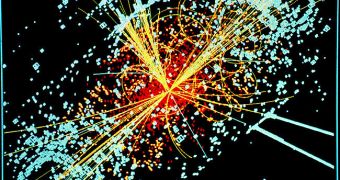According to investigators based at the US National Institute of Standards and Technology (NIST), future quantum computers will be used to simulate collisions and other interactions between elementary particles, potentially adding a wealth of data to the information already being produced by massive particle accelerators such as the Large Hadron Collider.
Conducting this type of studies using modern-day, conventional computers is impossible, due to the severe limitations in terms of processing power these machines display. While the latest processors may sport some pretty impressive features, their capabilities are a far cry from what is needed to simulate elementary particles.
A couple of years ago, researchers explained that a regular supercomputer could only analyze interactions between a maximum of 5 atoms before the calculations become unbelievably complex, and jam the machine. A quantum computer will not have this problem, since its processing power will be immense.
On the flip side, it is unlikely that the world will get access to quantum computers any time soon. While progresses have been made over the past few years, researchers estimate that we are still at least a couple of decades away from working machines.
However, when they are made available, these instruments will be used to resolve a host of complex problems and to conduct simulations that are simply beyond the capabilities of current computers.
“We have this theoretical model of the quantum computer, and one of the big questions is, what physical processes that occur in nature can that model represent efficiently?” says theorist Stephen Jordan, who is based at the NIST Applied and Computational Mathematics Division.
“Maybe particle collisions, maybe the early universe after the Big Bang? Can we use a quantum computer to simulate them and tell us what to expect?” he asks. The expert and his team have developed an algorithm that they say will run on quantum computers regardless of the technologies used to construct these devices.
The algorithm would simulate all the interactions that can occur between two elementary particles. Today, such a study would require several supercomputers and a particle accelerator to conduct, as well as a few years to spare.
“What's nice about the simulation is that you can raise the complexity of the problem by increasing the energy of the particles and collisions, but the difficulty of solving the problem does not increase so fast that it becomes unmanageable,” says theorist John Preskill.
“It means a quantum computer could handle it feasibly,” concludes the expert, who holds an appointment as the Richard P. Feynman professor of theoretical physics at the California Institute of Technology, in Pasadena.

 14 DAY TRIAL //
14 DAY TRIAL //